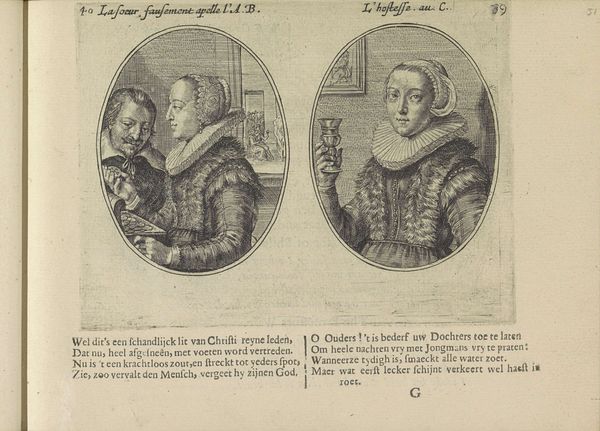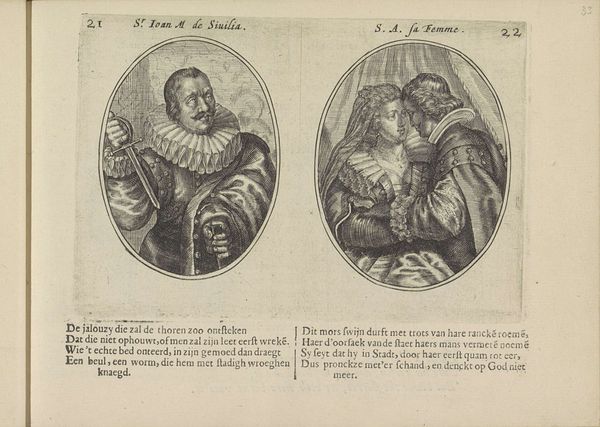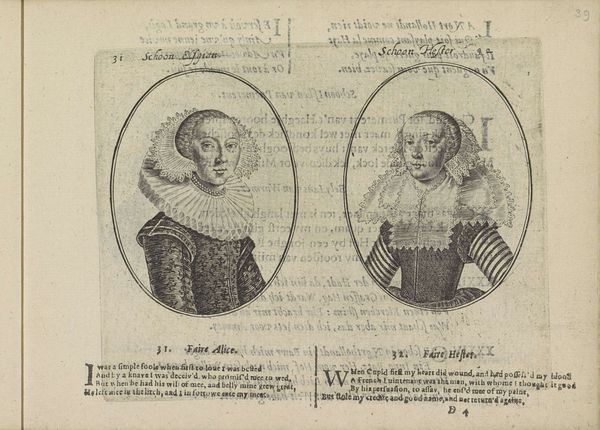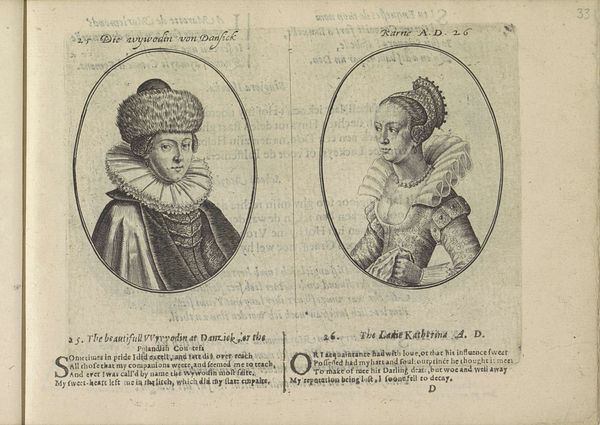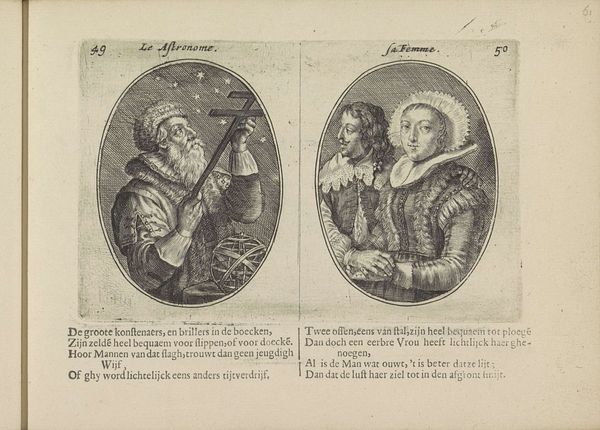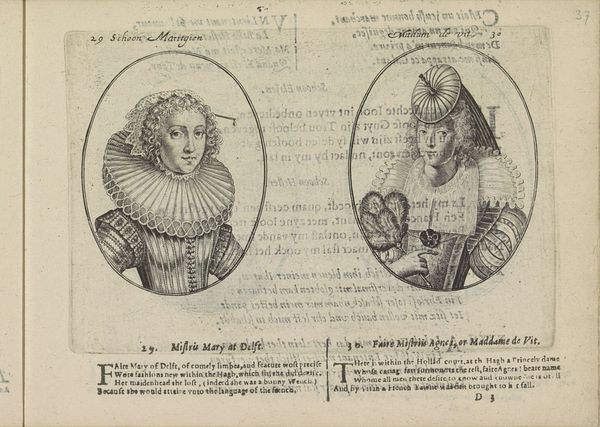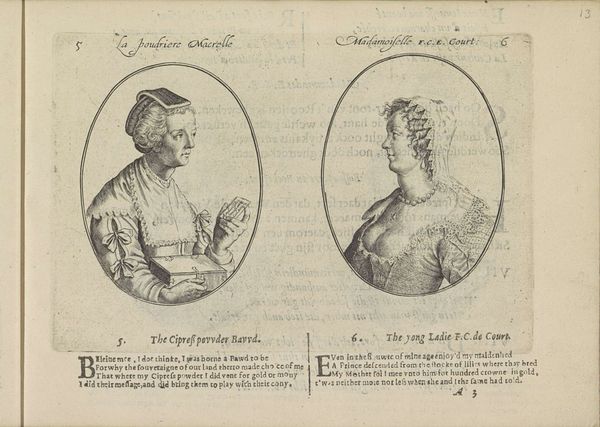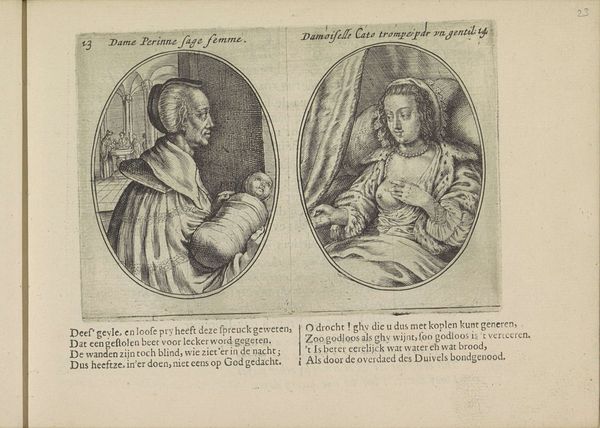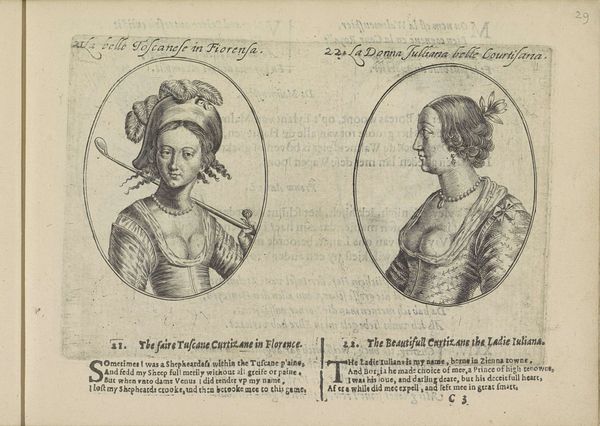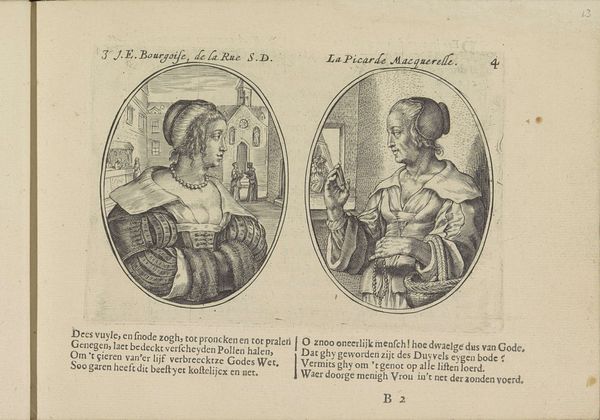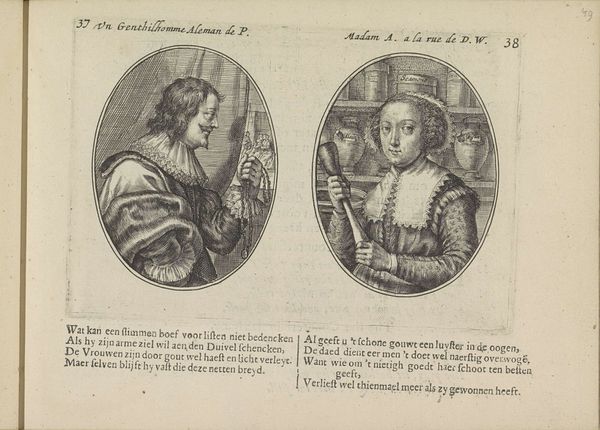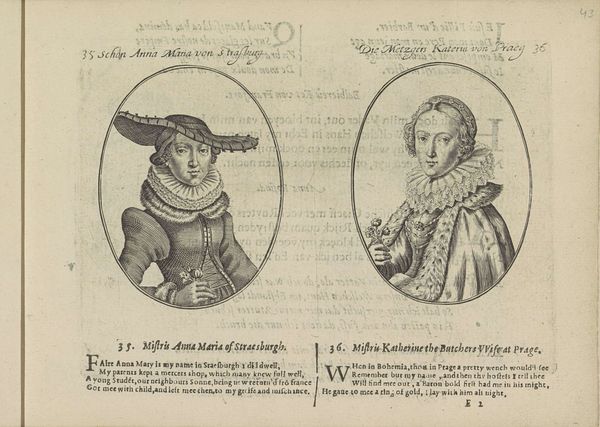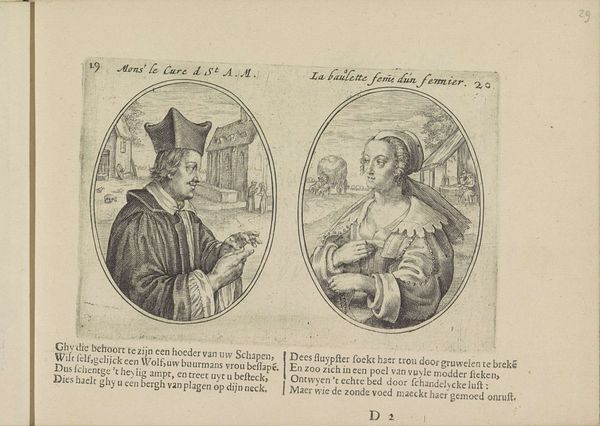
Portretten van de courtisanes genaamd Schone Jenne van Arras en Marotte van Nancy 1635
0:00
0:00
mixed-media, print, engraving
#
portrait
#
mixed-media
#
baroque
# print
#
old engraving style
#
history-painting
#
engraving
Dimensions: height 114 mm, width 157 mm
Copyright: Rijks Museum: Open Domain
Curator: Today we’re observing “Portretten van de courtisanes genaamd Schone Jenne van Arras en Marotte van Nancy,” or “Portraits of the courtesans called Fair Jenny of Arras and Margot of Nancy.” Crispin van de Passe the Younger executed this engraving around 1635. Editor: Immediately, I’m drawn to the stark contrast – it’s very much a product of its time. The fine lines and formal composition lend it a rather serious, even austere feel, despite depicting what I know were women of perhaps questionable repute. Curator: Indeed. Van de Passe was a prolific printmaker. The engraving process itself, cutting into a metal plate, demanding precision and skill, speaks to the labor involved in reproducing these images for a wider audience. This wasn't a unique piece of art; it was meant for circulation, consumption, and dissemination of certain social ideas. Editor: And what ideas might those be? The visual language of the portraits is fascinating. Each woman is framed in an oval, almost like a cameo. The figure on the right is holding a fan, a conventional symbol for conveying multiple layers of meaning – elegance, intrigue, perhaps even a bit of coquettishness. These attributes aren't usually attributed to someone with "questionable repute." It almost challenges us to reassess these notions, doesn't it? Curator: It’s intriguing to consider the audience, and their reading of such details. Prints allowed the burgeoning merchant class access to images previously reserved for the elite. But also the way the production and materials shape perceptions of class and status. Think of the availability of paper and ink, how this impacted the social function of the image. Editor: The inscription at the bottom, though partially obscured in the digital image we’re viewing, is equally telling. Each woman is given a little verse or epithet, a fragment of a story, hinting at their identity and allure. These literary embellishments augment the visual and serve to fix, or perhaps destabilize, the connotations attached to them. Curator: A point well taken. These visual and textual elements, mass produced as they were, offered new ways of defining, and consuming notions of beauty, vice and reputation within the context of early modern society. Editor: A fleeting encounter with beauty and social complexity. Looking closely reveals far more than just simple portraits; it shows a nuanced depiction of culture. Curator: Agreed. Reflecting on the process and means of disseminating and shaping the lives and careers of the people that Crispin de Passe depicted shows art’s complex relationship to the larger society that consumed it.
Comments
No comments
Be the first to comment and join the conversation on the ultimate creative platform.
